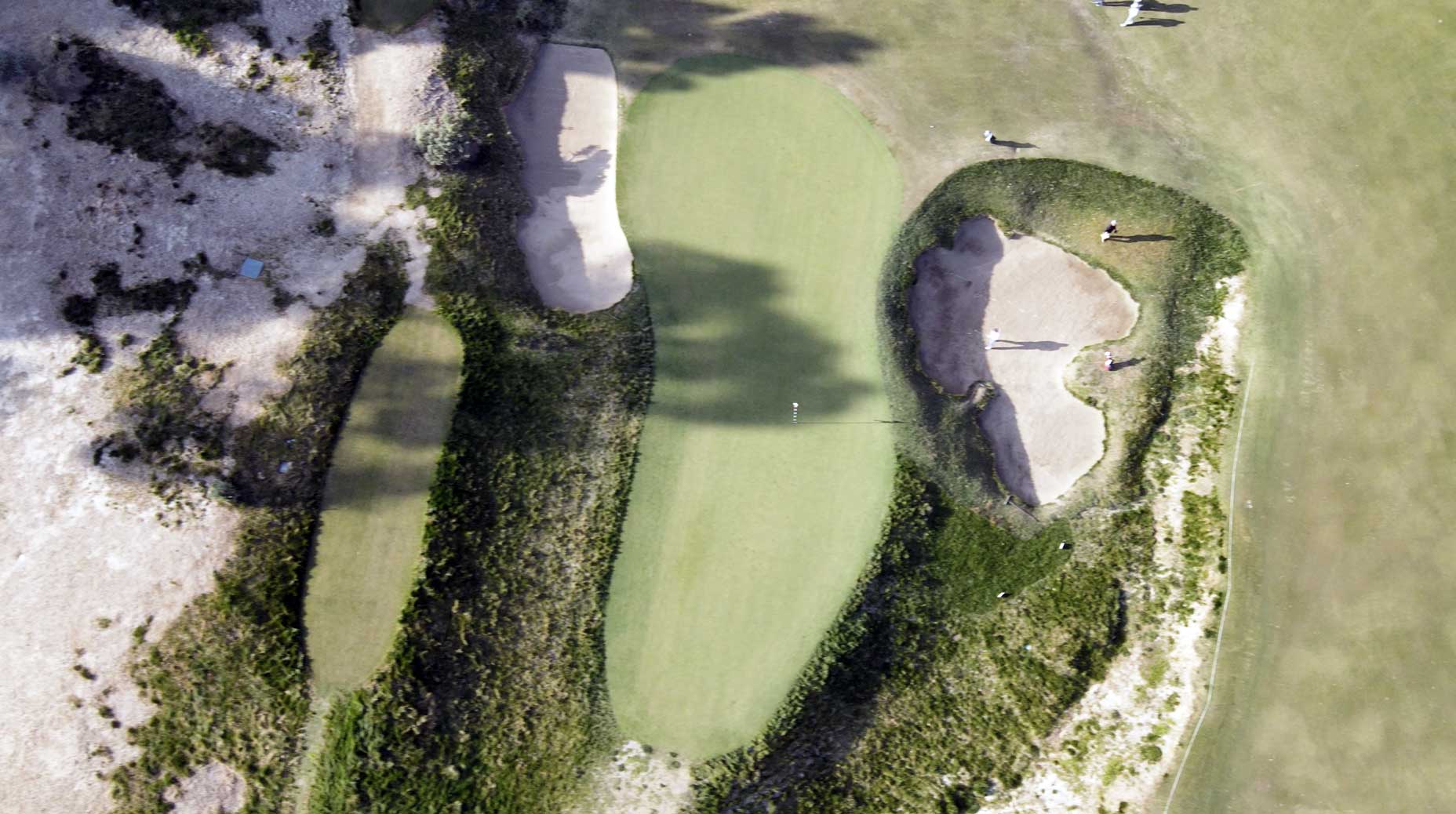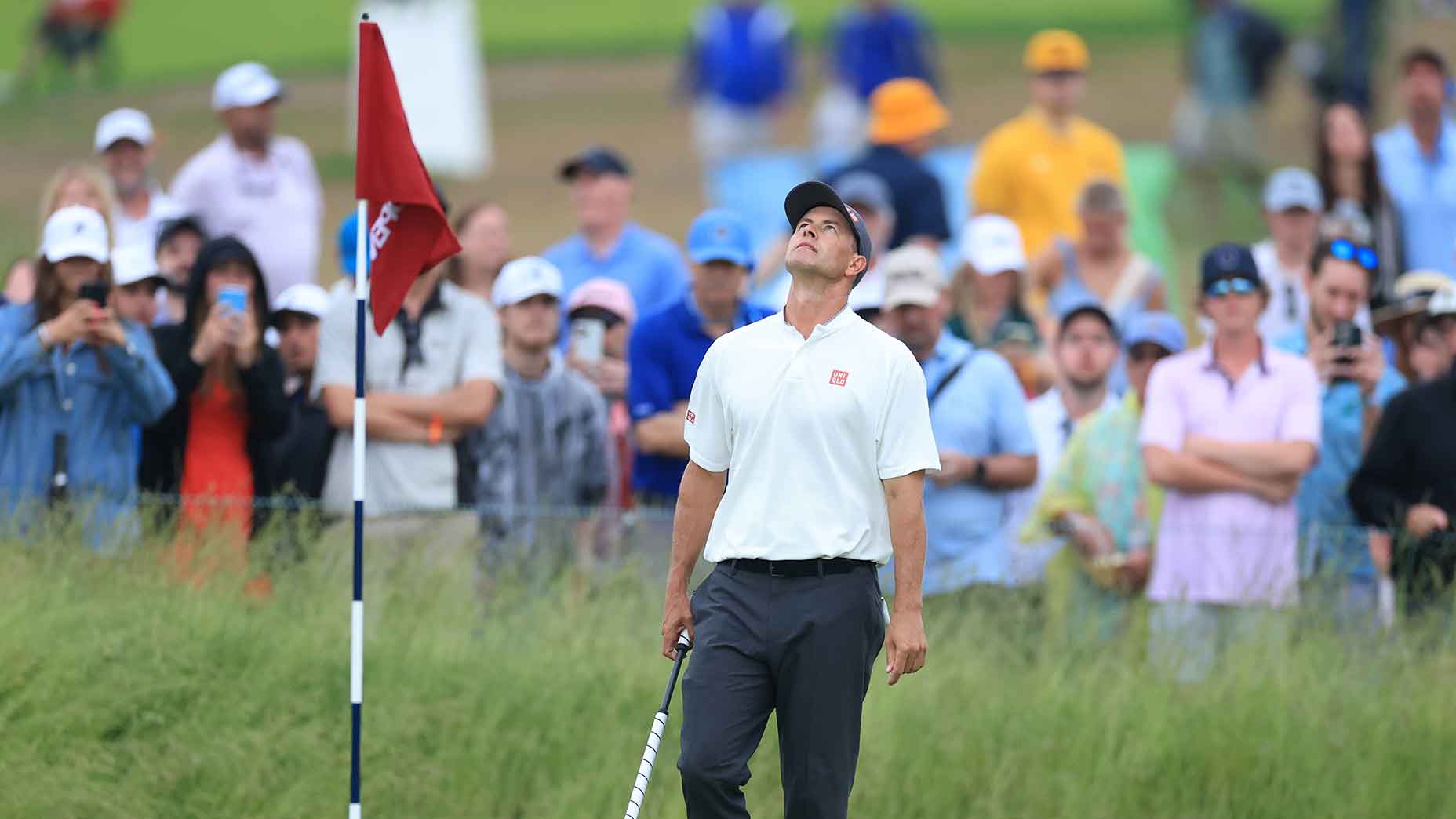LOS ANGELES — Brooks Koepka was feeling awfully cheeky during his Tuesday press conference at the U.S. Open. He cussed, he flexed his major championship win total, he even ended with a quippy joke about the PGA Tour-Saudi PIF deal.
“See you guys at Travelers [Championship] next week,” Koepka said with a smile, bounding down from the dais. He won’t be at the PGA Tour event next week. Thus goes a Koepka Conference when he’s feeling good.
The most interesting moment in all that cheekiness, at least in terms of how this U.S. Open will play out, came on question No. 21. “How do you see [No.] 6?” he was asked. “Well you can’t see 6,” Koepka said, and cheeky or not, technically he was correct. The 6th hole at the North Course is Los Angeles Country Club’s little gem, but from the tee box, you can’t see it. And that’s just the start of the tricks it will play on the best players in the world.
The 6th is a par-4, and drivable. For the best in the world, it’s even 3-woodable. But it’s a blind tee shot if you’d like to reap the biggest rewards. Koepka doesn’t like blind tee shots, which isn’t unique. No one really does. Tour pros like to see their targets, and leave nothing up to chance. That’s part of why they won’t talk much about the future of the PGA Tour. Everything is up in the air.
But back to the 6th tee. The white and blue sign that stands next to it lists this hole at 330 yards, but that’s when you play it like a 12-handicap, out to the left, through the meat of the fairway. There’s comfort there. A football field-length of short grass. When you play it like a pro, you look at that tree straight ahead and trust that the dart board is somewhere on the other side of it. Toss it up there and hope.
Mackenzie Hughes played a “little driver” into the wind Monday, according to his caddie Jace Walker. Their line was directly over the center of the tree. After they weaved left through the fairway, then back toward the green, their ball had somehow found its way onto the shallow putting surface, which looks like the footprint of a giant with narrow shoes. It was the kinda shot players would pay money for. You almost hate to pull it off during a practice round, because it’s useless to your weekly score.
“It’s going to be very player-dependent, I feel like,” Hughes said. “Some guys will think ‘Oh, I want to [lay back and] have a little flip up to the green every day.’ And some guys will think, ‘Oh, I’ll take my chances and maybe knock it on. I’ll take my chances with a weird spot around the green.’”
Okay, Mack. But what are you going to do.
“I think I would lean towards getting it up by the green,” he said. “Because then I feel like if I do hit it in a great spot, it’s a pretty easy 3.”
That’s just the thing. If. Up there near the green awaits about half a dozen iterations of golf ball hell. The Bermuda grass rough is deeper in some spots than others. Thicker in some spots than others. There’s a bunker short and a bunker long. There’s an unkempt barranca that begins just short left of the green. Some spots sandy, other spots bare, dry dirt. The kind that isn’t friendly to wedges. Don’t want to end up there, staring down at a golf ball in a crevice? Don’t hit it there. Someone will slam their driver head into the tee box this week as their ball hooks into that barranca land. That’s no if. It’s going to happen.

Jon Rahm was asked about his plans and showed little interest in sharing them.
“I’m not going to sit here and tell you what I’m going to do,” Rahm said Tuesday, “because I’ve said before I’m not going to hit 3-wood or driver and then if I tee off on 10 and I’m feeling really confident in my swing, I absolutely will hit driver or 3-wood into that green.”
Player-dependent and conditions-dependent. What more can we ask of a professional golf hole? The U.S. Open can be a bit cruel but damn do we like to watch the best players in the world squirm. Mostly, we just like seeing them work for it. To wake up, check the wind — maybe even worry about the wind — pore over those pin sheets and stress about the two options: Play a nervy shot from the tee box, a nervy iron from back in the fairway or a nervy, flippy wedge with all the spin they can muster.
Rahm wouldn’t tip is hand, but he did say what he thought was probably best: “I think if you hit the lay-up to the spot you want to every day, which isn’t the hardest lay-up, I think your scoring average will be lower than going for it every day.”
There it is. Temptation. The potential for an easy birdie, maybe even an eagle. But Mr. No. 2 in the world, also known as the reigning Masters champion, thinks if you just hit an easy lay-up shot each day, your scoring average will be lower than playing blindfolded darts over a tree. He might be right and he might be wrong. How long can players resist that urge? Golf Channel’s John Wood spent a full six minutes explaining exactly that.
.@Johnwould walks through the 6th hole of the Los Angeles Country Club ahead of the #USOpen! pic.twitter.com/ekqutfoNjL
— Golf Channel (@GolfChannel) June 13, 2023
Collin Morikawa entered the week thinking it would be an automatic lay-up, but in about two minutes’ time his caddie convinced him they’ve gotta go for the green. Why? He pulled a practice lay-up into the rough. Now you’re playing for bogey. Therein lies a bit of the truth. This isn’t just a pursuit of the easy-birdie or the score-making eagle. It’s also the battle against the worst-case scenario.
So, how do we summarize? There’s gonna be joy, there’s gonna be pain, there’s gonna be some boring 4s and some get-outta-jail 4s. It might be a par 4.5 and on another day it might be a par 3.5. We absolutely love that. By the end of his meandering response to question No. 21, even cheeky Koepka had made up his mind.
“Six is going to be interesting,” he said. “You could see anything from a 7 to possibly a 2. It’ll be a fun hole to just stand on and watch. If I was watching, that’s where I’d go stand.”










